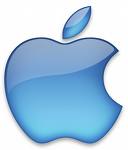Apple Moves To Dual CDN Vendor Strategy: Now Using Limelight With Akamai

For many years, Apple has relied on Akamai to deliver the vast majority, if not all, of Apple's content. But in the fourth quarter of 2008, it appears that Apple moved to a dual-vendor strategy and started using Limelight Networks in addition to Akamai for the delivery of OSX software updates, iPhone updates and app delivery from Apple.com and the iPhone store.
Starting in the fourth quarter of 08, content that I historically saw being delivered from Akamai, also started coming from Limelight Networks. Now I don't know if this content was "exclusive" to Akamai or if 100% of it historically came from Akamai, but as an example, in Q2 of 08, my OSX updates always came from Akamai domains. Last Friday, Apple released an update to QuickTime, version 7.6, and the update came from the Limelight network out of a Seattle POP. (cds.303.sea.llnw.net)
I don't know what parameters Apple uses to decide how they redirect a user's request to one CDN over another, but it appears much of it could be based on the geographic location the user is coming from as I also noticed this exact same QuickTime update getting delivered from Akamai depending on what city the user was located in.
I saw this dual-vendor approach happening across many different pieces of content for Apple including OSX updates, application downloads from the Apple.com site (like the iLife trial) iPhones software updates and some apps for the iPhone app store.
I started noticing all of these changes around the November time frame and didn't see a single piece of content being delivered for Apple, by Limelight, anytime before that. That's not to say it could not of been happening earlier, but I am one of those Apple freaks who downloads tons of stuff, always looking at where it comes from and have never seen the llnw.net domain show up anywhere before November.
In addition to this, I also saw the Limelight domain showing up for a limited time for HD videos coming from the Apple.com site, mostly around the holiday time last year. Tracing tons of that content now only shows me Akamai domains though, so I don't know if that is still happening.
It is also interesting to note that Apple's change to a dual-vendor strategy comes soon after Apple had major issues with the iPhone 3G launch and the MobileMe offering after experiencing outages with both services in the third quarter of last year. However, I don't know if either of these problems were a result of an outage or capacity issue on the network since Apple didn't say why the services went down. And while both Akamai and Limelight told me "no comment" when I asked them for details on delivering content for Apple, Akamai did go on record to say "Akamai had no service issues on our network in Q3 of 2008".
But the fact that the llnw.net domain is starting to show up for some of Apple's downloads shows Apple is looking to rely less on just one CDN to handle all of their traffic requirements which makes sense if you want to ensure you always have enough capacity. I don't know Apple's traffic volume, but considering how many iPods and iPhones they keep selling, you have to imagine their traffic has some crazy growth each quarter and moving to a dual-vendor strategy should help keep Apple's services from having future performance issues. We already know that no CDN has unlimited capacity and can only handle so much traffic at any given time and if you are Apple, using more than one CDN is just smart business.
Now one could speculate that Limelight only has a very small fraction of Apple's business. That may or may not be true, we don't know. But even if it's only a small percentage, a small percentage of Apple's traffic is huge considering how much volume Apple must be doing every month. And for most customers who move to a dual-vendor strategy, they don't put only a small amount of traffic with one vendor as that defeats the whole purpose of why you have a dual-vendor strategy to begin with. What financial impact Apple's move to a dual-vendor approach has on either Limelight or Akamai is yet unknown, and I don't know any of the contract details.
Quite often I am asked if most content owners use more than one CDN vendor for video or if what we are seeing by Apple is a trend. It's really hard to answer that question since some content owners tell me that using two vendors is a hassle due to having to two contracts, two sets of raw logs, two kinds of reporting etc. But other customers tell me they never want to rely on just one vendor and using two CDNs is essential to their business. That said, I have noticed that lately, it seems many of the big content portals do seem to be using two vendors, but not all of them.
I also think this move by Apple is a testament to both Akamai and Limelight's network performance, specific to video downloads. While I am sure both companies would disagree with me when I say that they both offer a similar level of performance on their network, the fact is that most customers tell me they see very little difference between the two networks for commoditized video delivery services, as it pertains to network performance.
In terms of pricing, reporting and other services outside of simple video downloads there are plenty of differences between the two companies. But if any customer is willing to give both CDNs the same type of video content for simple downloads, clearly the customer trusts both networks and does not see a big difference between the two in terms of performance, especially if they are sharing the traffic.
